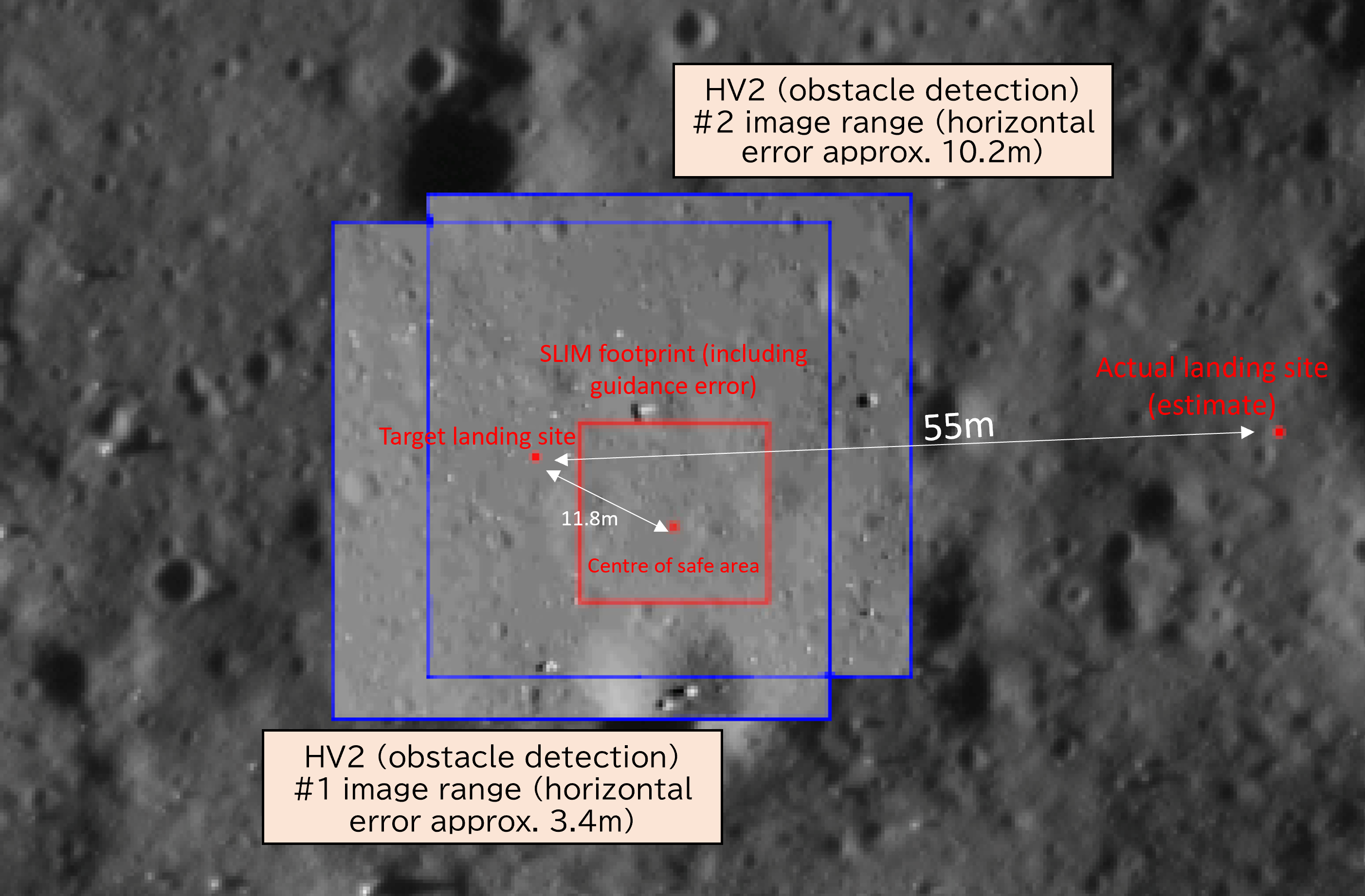Japan’s Smart Lander for Investigating Moon (SLIM) successfully soft-landed on the Moon on Friday, January 19, and was able to deploy two small rovers to explore the lunar surface. But from the get-go researchers suspected that there was something odd – the solar panels were not catching sunlight and charging the lander. Images from one of the rovers have solved the mystery. The lander is on its nose, and that’s why it’s not harvesting sunlight.
The lander has been placed in sleep mode for now while the two little robots rove around. The communication between them is strong and they can communicate directly with Earth. The team hopes that as the Moon goes around the Earth, the change in inclination of sunlight will reach the solar panels even in this position, and start charging the batteries again. The solar panels are currently facing west.

Estimation of the landing site and the preliminary data from the obstacle detection camera.
Image credit: Chandrayaan-2:ISRO/SLIM:JAXA
While the configuration was not the ideal scenario for this mission, the main goal for SLIM was achieved. The Japan Aerospace Exploration Agency (JAXA) set out to demonstrate that a space mission can land on another world with incredible precision. The goal was to soft-land within just 100 meters (330 feet) of a specific target area. Based on the current dataset, it appears to have landed just 55 meters (180 feet) from the target area.
This is an incredible feat. Just for comparison, the expected landing site for Apollo 11 was an ellipse 20 kilometers by 5 kilometers (12 by 3.1 miles). The landing ellipse for Perseverance on Mars was 7.7 kilometers by 6.6 kilometers (4.8 miles by 4.1 miles). Achieving such precision is a major leap forward. Initial data suggested that it might have been just meters away but follow-up analysis doesn’t seem to confirm that. More work is needed to establish the exact distance.
While the rovers will continue to work, SLIM was supposed to operate for a few days on the surface. The way forward is currently unclear, and it is very much dependent on how much power SLIM can get before the long lunar night.
On the Moon, the night lasts a little over 14 days followed by an equal amount of daylight. At night the temperature plummets well below freezing, which is often deadly for landers and rovers alike. JAXA will continue to monitor the situation and update the world in the coming days.
Source Link: First Image Of Japan's Moon Lander Shows It Hit Its Target But Landed Askew